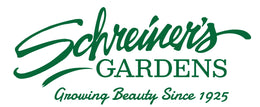Daylily Glossary
 Here we define many of the common terms used when describing Daylilies.
Here we define many of the common terms used when describing Daylilies.
APPLIQUE, APPLIQUED THROAT: Opaque color pattern originating in the throat and extending onto the midrib and tepal surfaces.
BICOLOR: Daylily flower with petals that are a different color than the sepals.
BITONE: Daylily flower with lighter tinted outer segments or sepals and darker tinted inner segments or petals of the same color.
BLEND: Daylily flower with blended coloration of two or more colors.
CASCADE: Term for cascading or curling segments of the Daylily. A term used in Unusual Form Daylilies.
COMPLETE SELF: Daylily with perianth segments, throat, pistil and stamens all the same color.
CRISTATE, MIDRIB CRISTATE: Refers to a form where extra petal tissue grows from the midribs or somewhere on the petal surface. If growing from midribs, it is a MIDRIB CRISTATE.
DECIDUOUS: Daylilies that lose their foliage completely before or after frost. They resume growth in spring.
DIPLOID (DIP): Plants that have 2 complete sets of chromosomes per cell.
DIURNAL: Flower opens in morning or during the day.
DORMANT (DOR): The plant temporarily suspends any growth that is visible.
DOUBLE: Daylily flower with more than one petal whorl or a stamen whorl that contains petal-like stamens.
DWARF: Daylilies up to 12 inches tall. The flowers can be miniature, small or large.
EARLY, (E): Blooms early in season, 3 to 5 weeks before midseason.
EARLY MIDSEASON, (EM): Daylilies blooming 1 to 3 weeks before heighth of season.
EVERGREEN, (EV): Daylilies that retain their foliage throughout the year. Evergreen Daylilies over-winter as mounds of frozen pale green foliage in colder climates.
EXTENDED BLOOM: Flowers that stay open 16 hours or more.
EXTENDED FLOWERING: Same as extended bloom.
EXTRA EARLY, (EE): First to bloom. March or April in the extreme South. May or June in the North.
EYE, EYEZONE: Daylily with darker colored zone on the petals and sepals, just above the throat.
FAN: Individual unit with leaves, crown and roots.
FEATHERED: Pattern in the eye zone with feathered appearance.
FLORAL WHORL: Layers of the flower. A complete Daylily has four whorls; the sepals, the petals, the stamens and the pistils.
HALO: When the eye pattern of a Daylily is narrow or indistinct.
HISTORIC DAYLILY: A Daylily plant registered before 1980.
HOSE-IN-HOSE DOUBLE: Daylily with extra whorls or layers of petals. This gives the appearance of a flower within a flower.
LARGE-FLOWERED DAYLILY: Daylily flower that is 4.5 inches or greater in diameter.
LATE, (L): Daylilies that bloom when most others have finished.
LATE MIDSEASON, (LM): Daylilies that bloom 1 to 3 weeks after peak bloom.
MIDRIB: Main lengthwise vein of a petal or sepal.
MIDSEASON, (M): Daylilies blooming at the peak of the Daylily season.
MINIATURE: Daylily flowers less than 3 inches in diameter. They can be on dwarf, medium or tall scapes.
MULTIFORM: Daylily with two or more forms of spider, unusual form, polymerous or double.
NOCTURNAL BLOOM: Flower that opens late in the day and stays open during the night. Can stay open all or part of the next day.
PATTERNED: Daylily with variations in color on the base, midrib or throat. The design is more ornate than a solid eye or band.
PENCIL EDGE: Thin line of color on the outer edge of an eye, band or watermark.
PEONY TYPE DOUBLE: Having petal-like stamens inside the normal petal whorl.
PERIANT: A typical Daylily consists of a funnel-shaped perianth tube with 6 tepals in two rows.
PETAL: The top 3 tepals of the Daylily.
PETALOID: Indicates a plant part that resembles a petal. Used as an adjective.
PICOTEE: Edging on a flower that is a different color than the base of the flower.
PINCHING: Floral segments with sharp folds that give a pinched effect.
PISTIL: Flower female reproductive organ.
PLEATED: Petals have a deep crease along each side of the midrib. This causes folding of the petal upon itself creating a raised platform from the top of the perianth tube and ends between the throat and the petal tips.
POLYCHROME: Flowers intermingling or blending many colors.
POLYMEROUS: A Daylily with more than the normal number of segments in the floral whirls.
QUILLING: Floral segments turning upon themselves along the length to form tubular shapes.
REBLOOMER, REMONTANT: Plant with more than one flowering cycle per year.
RECURVED: Flower petals reflex back toward the base giving a ball-like appearance.
REVERSE BITONE: Daylily flower with lighter coloring on the inner segments and darker color on the outer segments.
SCAPE: Flower stalk without leaves.
SELF: Daylily flower all the same color. Throat region can be a different color.
SEMI-EVERGREEN, (SEV): Used to describe any foliage not classified as evergreen or deciduous. Originally used to describe Daylilies that retained leaves in the south, but not in the north.
SEPAL:Bottom three segments of the Daylily flower.
SINGLE: Daylily flower with 3 petals, 3 sepals, 6 stamens and 1 pistil.
SMALL-FLOWERED: Daylilies with blooms 3 inches to 4.5 inches in diameter.
SPIDER: Daylily flower with petals that are four times or greater in length than the petal's width.
STAMEN: Pollen producing part of the flower with a filament supporting the anther.
TEPAL: The petals and sepals of the Daylily, also referred to as perianth segments.
TETRAPLOID, (TET): Plant having 4 sets of chromosomes per cell.
THROAT: Center of the Daylily flower where the pistil and stamens join to the bloom.
TRIPLOID: Plant with a triple set of chromosomes.
UNUSUAL FORM: Daylily class based on form, not color pattern. Having distinctive tepal shapes. Crispate, cascade or spatulate.
VARIEGATED FLOWERS: Flowers with streaks of different color or colors or patches of differing color or colors. Also known as BROKEN COLOR.
VEINING: Color pattern where base color and vein color are different.
VERY LATE, (VL): Daylilies that are last to bloom. Can be late summer in the South or fall in the North.
WASH: Layering of color over another color.
WATERMARK: Lighter color zone above the flower's throat. Color is lighter than the petal color.
WHORL: One of the layers of petals, sepals, stamens or pistils.




